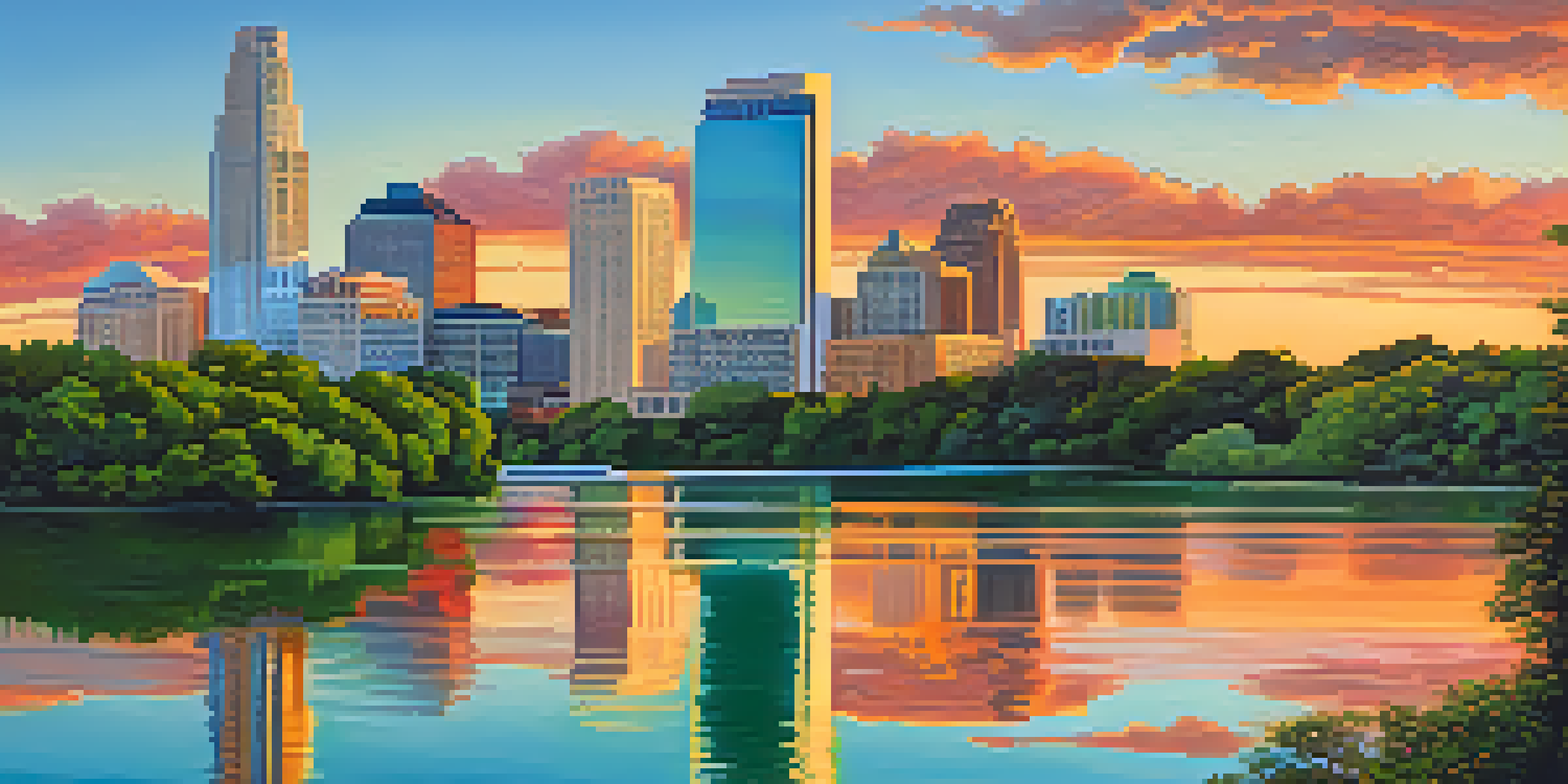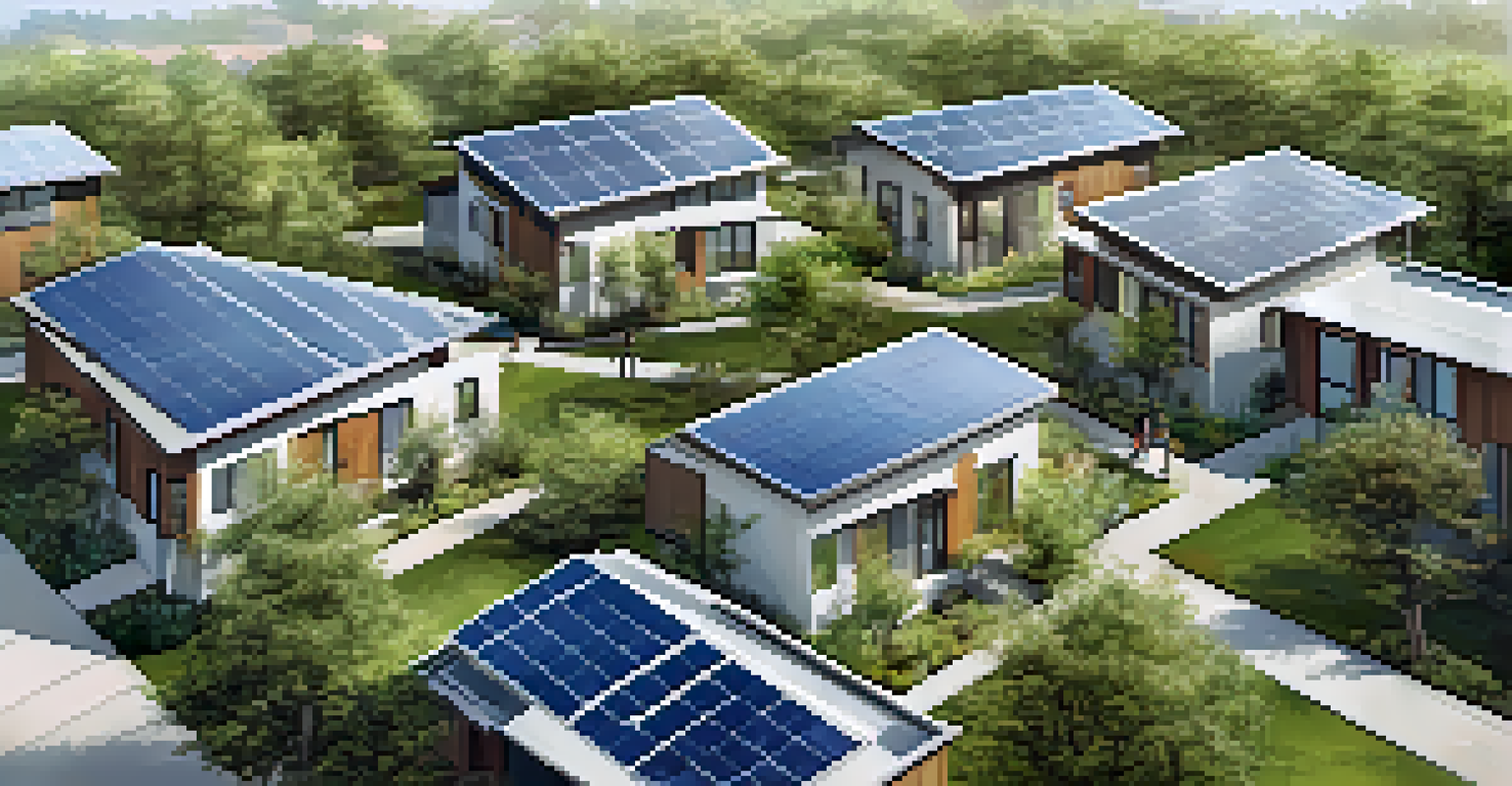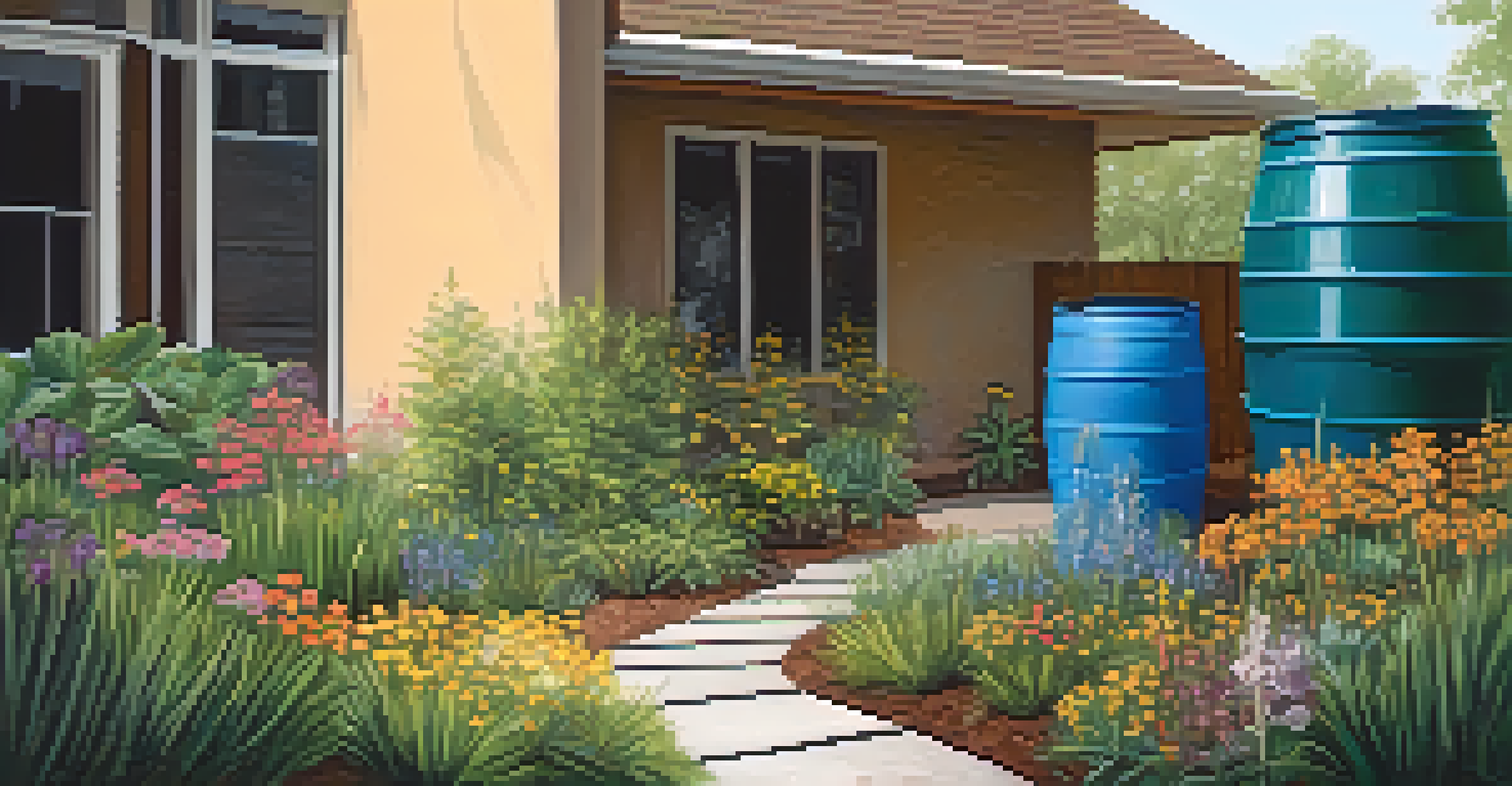Environmental Impact of Real Estate Development in Austin

Understanding Real Estate Development in Austin
Real estate development in Austin has seen explosive growth over the past decade, driven by a booming economy and population influx. With its vibrant culture and job opportunities, the city attracts new residents and businesses, leading to a surge in construction projects. However, this rapid development raises questions about sustainability and environmental stewardship. The challenge lies in balancing growth with preservation of the natural landscape and resources.
The greatest threat to our planet is the belief that someone else will save it.
Developers are tasked with navigating a complex web of regulations aimed at minimizing environmental impact. This includes zoning laws, environmental assessments, and community input. As Austin's skyline continues to change, understanding the implications of these developments is essential for both current residents and future generations. The question remains: can Austin grow without sacrificing its environmental integrity?
In this context, it's crucial to consider not only the immediate benefits of development but also the long-term consequences. For instance, increased construction can lead to habitat destruction and greater carbon emissions. Thus, fostering a dialogue among stakeholders—developers, city officials, and residents—is key to ensuring that Austin remains a livable city amid its rapid transformation.
Environmental Challenges Linked to Urban Development
As real estate projects spring up, they often come at a cost to the environment. One significant concern is the loss of green spaces, which serve as crucial habitats for local wildlife and help maintain ecological balance. In a city like Austin, known for its parks and natural beauty, the encroachment of urban development can lead to fragmentation of these essential ecosystems.

Furthermore, the construction process itself can introduce pollutants into the air and water. Heavy machinery, concrete production, and transportation contribute to greenhouse gas emissions, impacting air quality and climate change. The implications are vast, affecting not just the immediate area but also the broader environment as pollutants travel beyond city limits.
Balancing Growth and Environment
Austin's rapid real estate development must prioritize sustainability to protect its natural landscape and resources.
Water management is another critical issue tied to real estate development. Increased impervious surfaces, like roads and buildings, lead to greater runoff during rain events. This can overwhelm local waterways, resulting in erosion, sedimentation, and pollution. Addressing these challenges requires innovative solutions that incorporate sustainable practices into the development process.
The Role of Sustainable Building Practices
In response to the environmental challenges posed by traditional development, many builders in Austin are turning to sustainable building practices. These methods prioritize energy efficiency, waste reduction, and the use of eco-friendly materials. For instance, LEED (Leadership in Energy and Environmental Design) certification has become a sought-after standard for new constructions, signaling a commitment to sustainability.
Sustainability is no longer about doing less harm. It's about doing more good.
Incorporating green roofs, solar panels, and rainwater harvesting systems are just a few examples of how developers can lessen their environmental footprint. Not only do these practices benefit the environment, but they can also lead to cost savings in the long run. Homeowners and businesses alike are increasingly recognizing the value of sustainable features, which can enhance property values and appeal.
Moreover, sustainable building practices foster a sense of community and responsibility among residents. As people become more aware of their environmental impact, they are more likely to support initiatives that promote sustainability. This shift in mindset can create a ripple effect, encouraging more developers to adopt eco-friendly practices in their projects.
Community Involvement in Development Decisions
Community involvement is a vital component of responsible real estate development in Austin. Engaging residents in the planning process helps ensure that their voices are heard and considered. Public meetings, surveys, and feedback sessions allow community members to express their concerns and ideas, fostering a collaborative environment.
This involvement can lead to more thoughtful development that reflects the needs and desires of the community. For example, incorporating parks, walking trails, and green spaces into new projects can enhance the quality of life for residents. When developers prioritize community input, the result is often a more harmonious integration of new developments into the existing landscape.
Community Engagement is Key
Involving residents in development decisions ensures their needs are met and fosters more sustainable and harmonious urban growth.
Moreover, community engagement can help identify potential environmental impacts early in the process. By addressing concerns upfront, developers can work toward solutions that mitigate negative effects. Ultimately, a strong partnership between developers and the community can lead to more sustainable and desirable outcomes for all stakeholders involved.
Mitigating Urban Heat Island Effect in Austin
One of the environmental issues exacerbated by urban development is the urban heat island effect, where urban areas experience higher temperatures than their rural surroundings. This phenomenon occurs due to the abundance of concrete and asphalt, which absorb and retain heat. As Austin continues to grow, mitigating this effect becomes increasingly important for public health and comfort.
Implementing strategies such as increasing tree canopies, creating green roofs, and using reflective materials can help cool urban areas. These measures not only lower temperatures but also improve air quality and enhance the aesthetic appeal of neighborhoods. For example, planting more trees along streets and in parks can provide shade, making outdoor spaces more inviting for residents.
Additionally, community awareness and education about the urban heat island effect can empower residents to take action. Encouraging homeowners to plant trees or install green roofs on their properties can foster a sense of ownership and responsibility towards the environment. By working together, the community can significantly reduce the impact of this phenomenon while enhancing the overall livability of Austin.
Impact on Water Resources and Quality
Water resources are vital to both the environment and the economy, and real estate development can significantly impact their availability and quality. As new developments increase impervious surfaces, the natural absorption of rainwater into the ground diminishes. This can lead to decreased groundwater levels, which are crucial for maintaining local ecosystems and providing drinking water.
Moreover, construction activities can introduce pollutants into nearby water bodies, affecting aquatic life and posing risks to public health. Sedimentation, chemicals, and debris from construction sites can degrade water quality, leading to harmful algal blooms and fish kills. This not only disrupts local ecosystems but also burdens water treatment facilities tasked with ensuring safe drinking water.
Future of Sustainable Development
The trend toward sustainable practices in real estate development is set to grow, driven by climate change awareness and community demand.
To combat these issues, implementing best management practices like sediment control and stormwater management systems is essential. Developers can incorporate green infrastructure, such as bioswales and permeable pavements, to help filter pollutants and manage runoff effectively. By prioritizing water resource protection, Austin can safeguard its natural assets while accommodating growth.
Future Trends in Sustainable Development
Looking ahead, the future of real estate development in Austin is likely to be shaped by an increasing emphasis on sustainability. As climate change concerns grow, developers and city planners are seeking innovative solutions that prioritize environmental health. This trend includes the integration of smart technologies that optimize energy use and reduce waste.
For instance, advancements in building materials, such as recycled products and low-impact construction methods, are becoming more prevalent. These innovations not only minimize environmental impact but also appeal to a growing market of eco-conscious buyers. The push for sustainability is reshaping how developers approach projects, encouraging a shift toward greener practices.

Additionally, as public awareness of environmental issues rises, there is a greater demand for transparency and accountability from developers. Communities are increasingly advocating for sustainable practices, pushing for developments that respect the environment and enhance quality of life. This evolving landscape presents an opportunity for Austin to lead the way in sustainable real estate development, setting an example for other cities.